
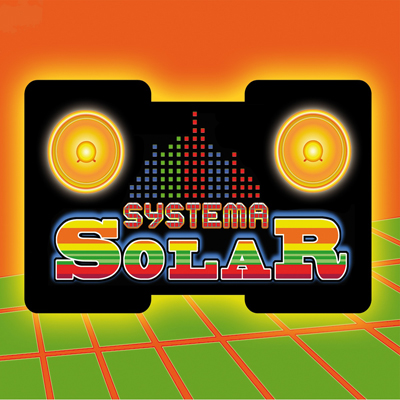
OneRPM

Playing with dynamite isn’t for everyone, but this music-video collective from Colombia’s Caribbean coast harnesses the blaze into an impressive debut. With backgrounds as DJs, producers, dancers, and rappers, the ambitious bunch gathered in 2006 to connect disparate styles with a reverence for electronic music and the jubilation of rave culture. They share a deep love for the verbena, which is the carefree and footloose spirit of revelers along the coastline. “Bienvenidos” aptly welcomes everyone to the party with Afro-Latin percussion and dizzying claps and raps. Like the mobile pikos sound systems,
Systema Solar is a sprightly jaunt zipping through the airwaves. It’s not all partying, however. Systema Solar tackles Colombia’s stigma as a land overrun by drug dealers on “Quien es el Patron?” and the inequities between north and south. No one is left untouched and the old-school hip-hop flavor of “El Amarillo” gives voice to a populace coerced into upholding the status quo.
(more…)
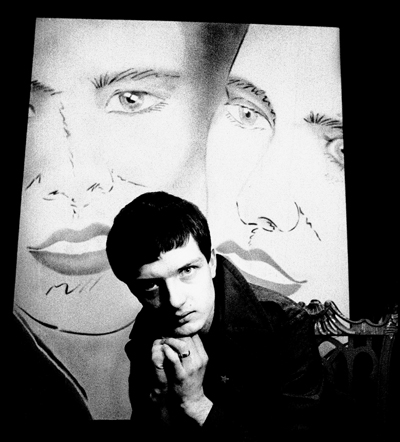
photography by Kevin Cummins, courtesy of Kevin Cummings, Joy Division, Rizzoli, 2010. (Click images to enlarge)

I came to Joy Division through Nine Inch Nails, after hearing their brilliant cover of “Dead Souls” on
The Crow soundtrack. I was immediately attracted by the emotional energy that bubbled up under Curtis’s somber, meditative voice. His introspection was way more attractive than the screams of the Sex Pistols. This lack of ostentation was what put the “post“ in “post-punk” for me.
Much has been said about Curtis’s suicide thirty years ago. Sometimes it seemed inevitable — his lyrics were permeated with existential crisis. I am writing this as drums cascade on “Heart and Soul”, and Curtis sings, “Existence, well, what does it matter? I exist on the best terms I can”. But to write another eulogy seems pointless. Sometimes images do more by allowing us to simply absorb, without interpreting and analyzing.
Joy Division never made it big during its short life, and so the band was rarely photographed. A new book,
Joy Division (
Rizzoli, $45), by the band’s photographer, Kevin Cummins, aims to fill this void. For the truly obsessive, the book begins with shots of various Joy Division paraphernalia, including the original instruments and Curtis’s notebooks. But the book really unravels in the following photo session that depicts the band walking through dreary Manchester, including the famous shot of the band standing on a snowy overpass. Other photo sessions (they function like small stories) depict the band rehearsing and performing. The black and white images look raw and vivid, harking back to the pre-digital photography world, and they make the band come alive again.
(more…)

Photography courtesy of Chronicle Books

With this summer’s release of
Art of McSweeney’s, Dave Eggers and co. may have provided the most compelling reason yet to hold off on buying a Kindle. Though
Art of McSweeney’s is technically an anniversary tribute to the unfailingly original visuals in the pages and on the covers of all publications under the McSweeney’s umbrella —
The Believer magazine,
McSweeney’s Quarterly Concern, all four imprints of McSweeney’s Books — the über-illustrated tome is a typically large McSweeney’s undertaking, a tribute to the very existence and possibilities of print media.
“We spend a good deal of time editing books, and producing books of the highest quality we’re capable of, in the hopes that in doing so, we’ll keep people mindful of the pleasures of the book-as-object,” explains Eggers in the book’s early pages, alongside his dedication to “these physical books that purportedly have no future”.
True to their mission, the McSweeney’s team has created an object that can only be properly experienced in hard copy. From diagrams to illustrations to behind-the-scenes photos (Joyce Carroll Oates playing Sega stands out as a highlight)
Art of McSweeney’s reads like a 264-page love letter to all things printed and bound, complete with a muse board of old school book covers that would make Kanye West proud.
(more…)

Cover courtesy of The University of Chicago Press

This was supposed to be the year when the powers in Washington came together to pass new legislation on energy. Instead, it is a year that may best be remembered for an unprecedented oil spill and a missed opportunity at seriously addressing climate and energy security concerns. The announcement that the White House is being fitted for new solar panels comes as a potential sign of newly recharged aspirations, but for now the lack of a clear forward strategy simply means that these issues will only gain greater urgency. This places even greater relevance on the recently published tour de force of an energy guidebook,
The Powers That Be (The University of Chicago Press, $35) by geologist and science writer Scott L. Montgomery. While conceding that a precise picture of the future is still impossible to draw, the book presents an encyclopedic account of the current landscape and a preview of the transformations and challenges awaiting us.
The decades ahead will be ruled above all else by energy pluralism, according to Montgomery, given the fact that a greater set of options now exists than ever before and with advancements continuing to take place in each case. Yet in our energy present, 80 percent of the globe is still powered by fossil fuels. There is a tremendous upward trend in demand, mollified only temporarily by the recession and led primarily by developing nations, such as China and India, which are relying to an alarming degree on their domestic coal reserves. The issue is not one of resource depletion.
(more…)
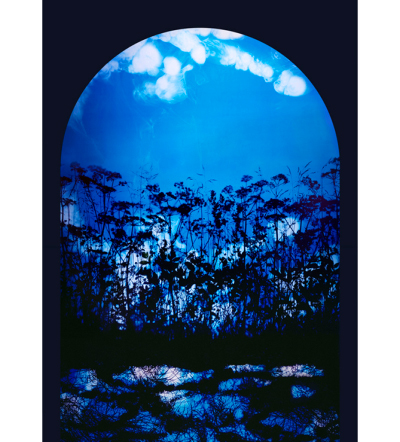
Arch 4 (Summer), Susan Derges Images courtesy of Victoria and Albert Museum (Click images to enlarge)

Made famous by the likes of Man Ray and Moholy-Nagy, camera-less experiments can be traced back to the genesis of photography. Beginning in the 1830s, artists continually broke new ground toying with light-blocking, shadow-casting and chemical manipulation, accidentally creating photogenic drawings, or photograms. Unlike virtually everything we know of today, camera-less images are truly unique and cannot be reproduced the same way twice. Often crafted to scale, the results are ephemeral, transient, and mysterious, offering a more intimate look at the object or figure being captured. Steeped in metaphor and reliant on the ‘unseen’, each image is an exploration — of life and death, time and timelessness, disappearing and emerging. The paradigm of normal perception is questioned as discoveries are made in the shadows.
This month, five leading contemporary artists of camera-less fame will be featured in
Shadow Catchers, a new exhibit opening at London’s
V&A. The exhibition includes an impressive array of enigmatic images that marry the effects of light, movement, science, and art. Eerie silhouettes, spectral forms and magical traces of smoke, air, and water leave the viewer in a perpetual state of suspended disbelief. Five short films and a beautiful hardback book published by Merrell Publishers accompany the exhibit. Together, Pierre Cordier (Belgium), Susan Derges (UK), Adam Fuss (UK/USA), Garry Fabian Miller (UK), and Floris Neusüss (Germany) have done more for the art form than any group of contemporary artists that came before them.
(more…)


Ninja Tune

Andreya Triana has gainfully been trying to make her voice heard as guest vocalist on records by
Flying Lotus, Theo Parrish, and Mr. Scruff. It is Bonobo’s Simon Green, however, who decided to shine the spotlight on this soul torch singer by producing her debut,
Lost Where I Belong. Green brings modern day trippy touches to
Belong, but it is Triana’s beleaguered character and expert songwriting that is its draw. Husky delivery and bearing lyrics set Triana apart from soul artists who keep their innermost feelings hidden. Triana takes cues from some greats: Erykah Badu, Jill Scott, Nina Simone, and Billie Holiday. But rather than imitating, she allows their styles inform hers by developing something all her own that owes as much to jazz as it does to soul. Triana’s songs have a haven’t-I-heard-this-song-before quality to them — the sign of a hit. Front-loading
Belong are a couple of stellar tracks, the painful ripper “Draw The Stars” and the revealing title track. Shuffling beats and Portishead-esque cracking tones keep Triana — and the listener — on the brink of tears on “Daydreamers”. The only drawback of
Belong may be that it doesn’t explore Triana’s varied vocal styles as much as it could.
Audio clip: Adobe Flash Player (version 9 or above) is required to play this audio clip. Download the latest version here. You also need to have JavaScript enabled in your browser.
Buy this at Other Music or iTunes. After the jump, check out the video for “A Town Called Obsolete”.
(more…)
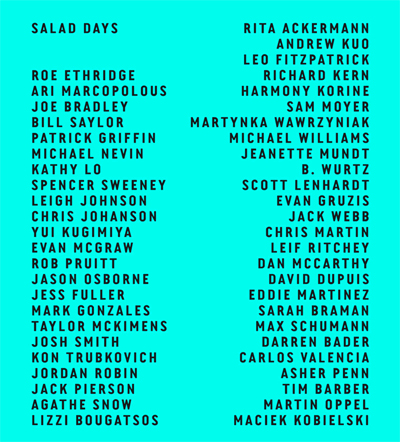
Click image for more details
 Salad Days
Salad Days, a group show comprising 49 emerging and established contemporary artists, opens tonight at
The Journal Gallery in Williamsburg. Featured artists include Tim Barber of
tinyvices.com, Agathe Snow, Lizzi Bougatsos, Jack Pierson, Kathy Lo, Carlos Valencia, and many more. Details of the show are sparse, but the laundry list of participating
en vogue downtown artists seems to indicate a show worth seeing. The opening, from 6-9pm tonight, should shed some light on the mystery — be sure to check it out.
The Journal Gallery: 168 North 1st Street, Brooklyn. The gallery is open from 12 p.m.-6 p.m. Tuesday – Sunday.
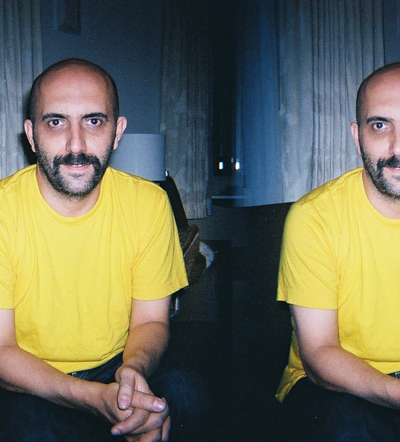
Director Gaspar Noé , An IFC Films release (Click images to enlarge)

Of contemporary filmmakers, perhaps only Lars von Trier could claim to be more divisive and controversial than Gaspar Noe. There are the hostile reviews, walkouts at Cannes, and the scene in his second feature,
Irreversible, in which Monica Bellucci’s character is savagely beaten and raped — the origin of much of the controversy.
But to focus too much on Noe’s reputation is to ignore that he is one of the most gifted, original, and, yes, provocative filmmakers working today. His newest film,
Enter the Void, is his most experimental and also his best. Set in Tokyo, much of the two-and-a-half-hour film is shot from the perspective of the disembodied spirit of its protagonist, Oscar, a young American drug dealer who is shot by the police during a bust. The film’s plot, which explores reactions to Oscar’s death, his past, and his arguably incestuous but definitely Freudian relationship with his sister is ultimately less important than Noe’s suggestion that death is the biggest trip. To talk about blasts of light or shaky cameras would blunt the impact of what is, formally at least, one of the most inventive psychedelic films in recent memory. PLANET spoke with Gaspar Noe about critical reaction to his movies, psychedelic films, and one of
Enter the Void’s most memorable scenes.
(more…)

assume vivid astro focus by Cay Sophie Rabinotwitz, courtesy of Rizzoli, 2010.

In today’s instamatic culture where attention spans are steadily decreasing and whoever shouts loudest wins, it seems creative minds have only two ways to go — you either embrace the cultural noise or retreat from it. Assume vivid astro focus, the growing, multi-striped art collective, seems to wholly embrace the speed-of-light changes with its collages and installations. The group’s chosen aesthetic method is sensory overload — an explosion of colors and sounds. The work itself is mostly collages and installations, the copy-and-paste, low-brow material that ranges from carnivals to gay porn. This just might be the logical end of postmodernism.
Avaf, as it is also known, became recognized in 2004 with its outrageous, cacophonous installations. The collective’s artists have done many since and their work has been exhibited in major museums in the US and abroad. The new, eponymous book (
Rizzoli, $60) documents the collective’s work in a gorgeous visual tome with 270 illustrations. The volume also includes an avaf-designed, a surprisingly understated (by avaf standards) poster, and a mask with 3-D glasses — just in case your brain does not explode from seeing their vibrant pastiches with the unassisted eye.
The text that opens the book is an engaging essay by Cay Sophie Rabinowitz, director of Art Basel. As with any loud, campy art, the natural question arises — are these guys serious? Is this a critique of contemporary culture or its indulgence? Rabinowitz offers no answer. I guess you will have to decide for yourself.
(more…)


Installation View. Photography courtesy of Peres Projects.


While the writings of William Morris, a key figure in the 19th-century Arts & Crafts Movement, provided the jumping-off point for Spanish artist Antonio Ballester Moreno’s current show,
ANTI, at
Peres Projects in Berlin, Moreno’s works are anything but retrogressive. Moreno’s colorful, folk-art-inspired paintings focus on the keenly contemporary idea of a sustainable life, in response to the obvious damage and limitations of the industrialized world we live in. Nature, anti-capitalism, and “the innate potential of human beings” run throughout this show, counterbalanced by Moreno’s clear questioning of the Utopianism inherent in those ideas.
Moreno has also long focused on the truths and naivete of childhood, filtering his ideas through basic, impulsive strokes of paint as well as the bright colors we associate with children. But the simplicity of his figures belies a complex commentary on art history, our consumption of art and the place of art in our contemporary existence, in which the relationship between man and nature is harrowingly tenuous, if not entirely broken. As the gallery tells us: “His faux naïve style imparts a false sense of bucolicism, tempered by his particular brand of humor.” The second exhibition of Moreno’s at Peres Projects,
ANTI presents itself to us as a beautiful double-narrative that grapples with the ways in which we think about our place in nature.
ANTI will be on display until October 30 at Peres Projects, Berlin.
(more…)






 Facebook
Facebook Permalink
Permalink Digg
Digg Reddit
Reddit LinkedIn
LinkedIn StumbleUpon
StumbleUpon Tumblr
Tumblr













